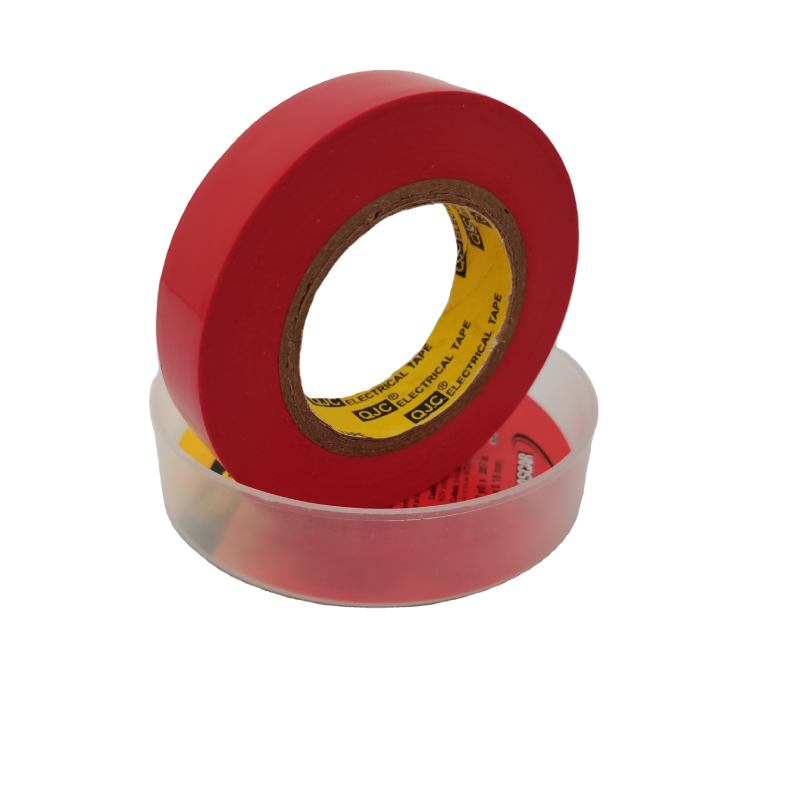The Versatility and Benefits of 130C Rubber Splicing Tape
In the realm of electrical and mechanical applications, the importance of reliable adhesive materials cannot be overstated. Among various options available on the market, 130C rubber splicing tape stands out due to its exceptional versatility and performance characteristics. This high-quality tape is specifically designed to meet the robust demands of splicing wires, protecting them from environmental factors and ensuring optimal conductivity.
What is 130C Rubber Splicing Tape?
130C rubber splicing tape is a type of self-fusing tape that consists of a rubber elastomer with an impressive operating temperature range, commonly up to 130 degrees Celsius. This makes it ideal for a variety of electrical insulation tasks, as it can withstand heat exposure without losing its adhesive properties. This tape is not just functional; it is also designed to be durable, resistant to moisture, chemicals, and abrasion, which makes it a preferred choice in harsh environments.
Key Features
1. Self-Laminating Properties One of the standout features of 130C rubber splicing tape is its self-laminating capability. Once stretched and applied, the tape adheres to itself without the need for additional adhesives. This creates a seamless seal that protects the spliced area from moisture, dust, and other contaminants.
2. High Voltage Resistance The tape is designed to provide excellent insulation properties, making it suitable for high-voltage applications. It can safely insulate and protect electrical connections, which is essential for maintaining system integrity and preventing electrical failures.
130c rubber splicing tape

3. Flexibility and Conformability The rubber composition of the tape allows it to be highly flexible. It easily conforms to irregular shapes and surfaces, ensuring a tight fit. This feature is particularly advantageous when dealing with intricate wiring systems or when space is limited.
4. Temperature Stability As indicated by its rating, 130C rubber splicing tape can withstand elevated temperatures without degrading. This quality provides peace of mind in environments where exposure to heat is inevitable, such as in transformers or near heat-generating machinery.
5. Easy Application The user-friendly nature of 130C rubber splicing tape means it can be applied quickly and effectively, even by those without extensive technical training. Simply clean the surface, stretch the tape during application, and wrap it around the targeted area. The result is a reliable, insulated, and weatherproof splice.
Applications
Due to its unique properties, 130C rubber splicing tape is used across various industries. In the electrical sector, it is commonly employed for splicing wire connections in automotive, aerospace, and industrial machinery. Its resistance to moisture and chemicals also makes it suitable for outdoor applications and environments where exposure to harsh substances is a concern.
Conclusion
In summary, 130C rubber splicing tape is an invaluable tool for anyone involved in electrical work or mechanical repairs. Its robust features—self-laminating properties, high voltage resistance, flexibility, temperature stability, and ease of application—make it a top choice for professionals and DIY enthusiasts alike. As industries continue to evolve and demand higher standards of reliability and performance, products like 130C rubber splicing tape will remain essential in safeguarding electrical connections and ensuring long-lasting results. Whether you are looking to splice wires or protect sensitive components, this tape should be a key component in your toolkit.
-
XIANGFAN Rubber Tape-Ultimate Solutions for All Your Insulation NeedsNewsJun.24,2025
-
XIANGFAN Rubber Tape-Protection for Industrial and Residential ApplicationsNewsJun.24,2025
-
XIANGFAN Rubber Tape: Superior Safety and Sealing for Demanding EnvironmentsNewsJun.24,2025
-
XIANGFAN Rubber Tape: Reliable Solutions for Every Electrical ChallengeNewsJun.24,2025
-
XIANGFAN Electrical & Industrial Tape: Powering Reliability Across IndustriesNewsJun.24,2025
-
XIANGFAN Electrical & Industrial Tape: Excellence in Every ApplicationNewsJun.24,2025
